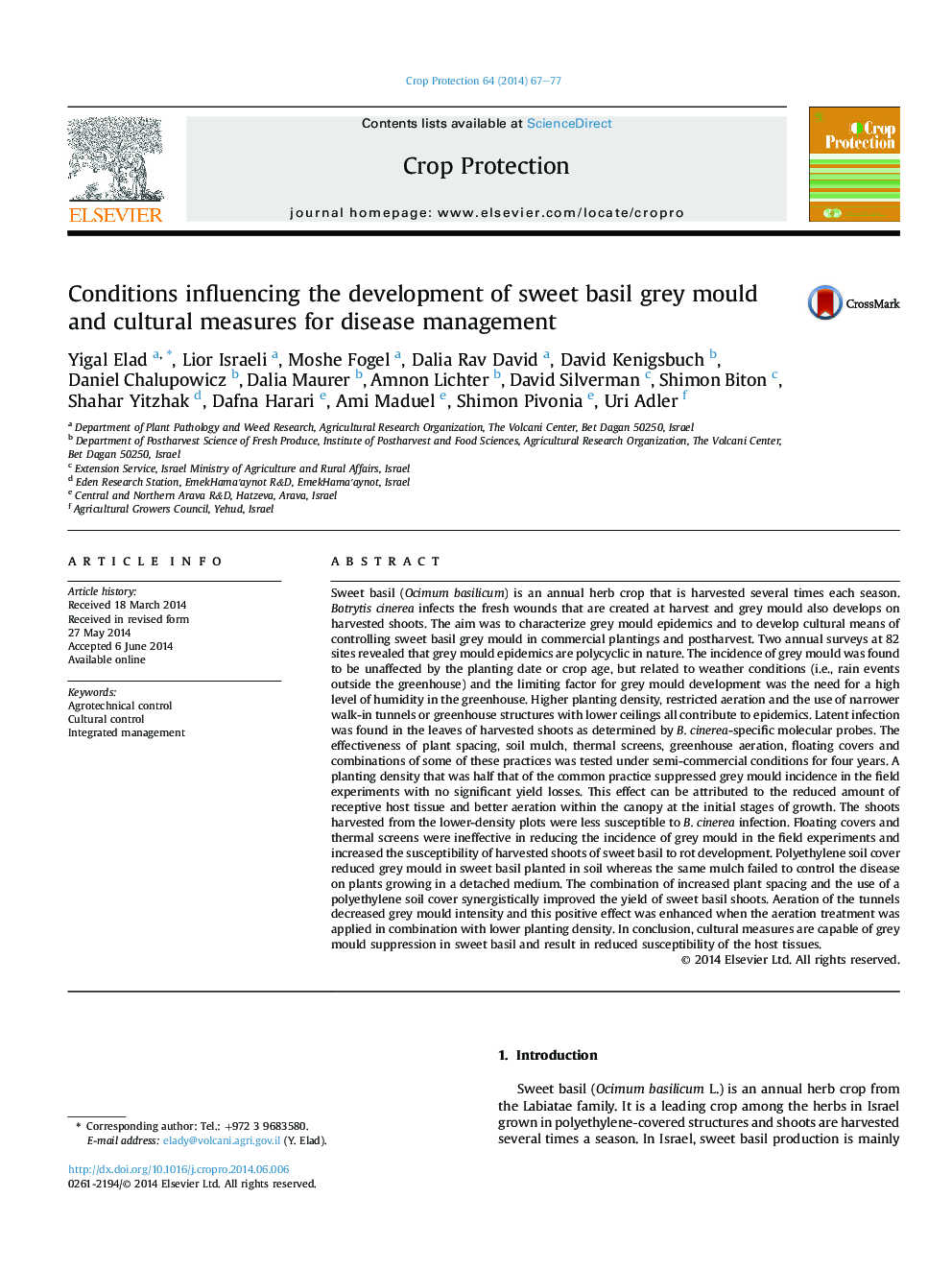| کد مقاله | کد نشریه | سال انتشار | مقاله انگلیسی | نسخه تمام متن |
|---|---|---|---|---|
| 6373652 | 1624323 | 2014 | 11 صفحه PDF | دانلود رایگان |
عنوان انگلیسی مقاله ISI
Conditions influencing the development of sweet basil grey mould and cultural measures for disease management
ترجمه فارسی عنوان
شرایطی که بر توسعه قالب خاکستری ریحان شیرین و اقدامات فرهنگی برای مدیریت بیماری موثر است
دانلود مقاله + سفارش ترجمه
دانلود مقاله ISI انگلیسی
رایگان برای ایرانیان
کلمات کلیدی
کنترل کشاورزی، کنترل فرهنگی، مدیریت مجتمع،
موضوعات مرتبط
علوم زیستی و بیوفناوری
علوم کشاورزی و بیولوژیک
علوم زراعت و اصلاح نباتات
چکیده انگلیسی
Sweet basil (Ocimum basilicum) is an annual herb crop that is harvested several times each season. Botrytis cinerea infects the fresh wounds that are created at harvest and grey mould also develops on harvested shoots. The aim was to characterize grey mould epidemics and to develop cultural means of controlling sweet basil grey mould in commercial plantings and postharvest. Two annual surveys at 82 sites revealed that grey mould epidemics are polycyclic in nature. The incidence of grey mould was found to be unaffected by the planting date or crop age, but related to weather conditions (i.e., rain events outside the greenhouse) and the limiting factor for grey mould development was the need for a high level of humidity in the greenhouse. Higher planting density, restricted aeration and the use of narrower walk-in tunnels or greenhouse structures with lower ceilings all contribute to epidemics. Latent infection was found in the leaves of harvested shoots as determined by B. cinerea-specific molecular probes. The effectiveness of plant spacing, soil mulch, thermal screens, greenhouse aeration, floating covers and combinations of some of these practices was tested under semi-commercial conditions for four years. A planting density that was half that of the common practice suppressed grey mould incidence in the field experiments with no significant yield losses. This effect can be attributed to the reduced amount of receptive host tissue and better aeration within the canopy at the initial stages of growth. The shoots harvested from the lower-density plots were less susceptible to B. cinerea infection. Floating covers and thermal screens were ineffective in reducing the incidence of grey mould in the field experiments and increased the susceptibility of harvested shoots of sweet basil to rot development. Polyethylene soil cover reduced grey mould in sweet basil planted in soil whereas the same mulch failed to control the disease on plants growing in a detached medium. The combination of increased plant spacing and the use of a polyethylene soil cover synergistically improved the yield of sweet basil shoots. Aeration of the tunnels decreased grey mould intensity and this positive effect was enhanced when the aeration treatment was applied in combination with lower planting density. In conclusion, cultural measures are capable of grey mould suppression in sweet basil and result in reduced susceptibility of the host tissues.
ناشر
Database: Elsevier - ScienceDirect (ساینس دایرکت)
Journal: Crop Protection - Volume 64, October 2014, Pages 67-77
Journal: Crop Protection - Volume 64, October 2014, Pages 67-77
نویسندگان
Yigal Elad, Lior Israeli, Moshe Fogel, Dalia Rav David, David Kenigsbuch, Daniel Chalupowicz, Dalia Maurer, Amnon Lichter, David Silverman, Shimon Biton, Shahar Yitzhak, Dafna Harari, Ami Maduel, Shimon Pivonia, Uri Adler,
